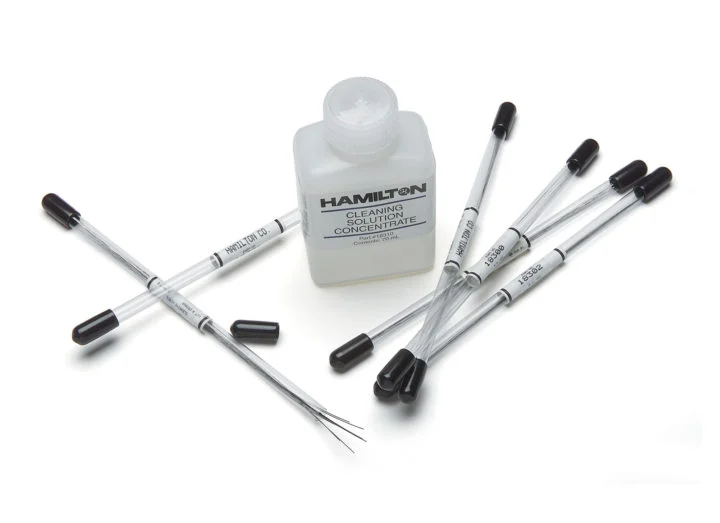Needles
-
-

-
- Manufacturers: Hamilton®
- Brand: Hamilton®
- SECO Part No: HC-7762-06
- Sold As: 6/Pack
- Manufacturer Part No: 7762-06
-
Availability:

- Minimum order quantity: 1
- Qty. Interval: 1
Hamilton® 7762-06
Removable Needle, 38.1 mm, 0.11 ID x 0.21 mm More...
-
Login to View Your Price
List Price :
-
Add to cart
-
-
-

-
- Manufacturers: Hamilton®
- Brand: Hamilton®
- SECO Part No: HC-7780-01
- Sold As: 6/Pack
- Manufacturer Part No: 7780-01
-
Availability:

- Minimum order quantity: 1
- Qty. Interval: 1
Hamilton® 7780-01
Removable Needle, 51 mm L, 0.12 ID x 0.47 mm More...
-
Login to View Your Price
List Price :
-
Add to cart
-
-
-

-
- Manufacturers: Hamilton®
- Brand: Hamilton®
- SECO Part No: HC-7779-02
- Sold As: 6/Pack
- Manufacturer Part No: 7779-02
-
Availability:

- Minimum order quantity: 1
- Qty. Interval: 1
Hamilton® 7779-02
Removable Needle, 51 mm L, 0.12 ID x 0.47 mm More...
-
Login to View Your Price
List Price :
-
Add to cart
-
-
-

-
- Manufacturers: Hamilton®
- Brand: Hamilton®
- SECO Part No: HC-90539
- Sold As: 6/Pack
- Manufacturer Part No: 90539
-
Availability:

- Minimum order quantity: 1
- Qty. Interval: 1
Hamilton® 90539
Luer Lock Needle, 51 mm L, 0.12 ID x 0.47 mm More...
-
Login to View Your Price
List Price :
-
Add to cart
-
-
-

-
- Manufacturers: Hamilton®
- Brand: Hamilton®
- SECO Part No: HC-8651-01
- Sold As: 6/Pack
- Manufacturer Part No: 8651-01
-
Availability:

- Minimum order quantity: 1
- Qty. Interval: 1
Hamilton® 8651-01
Replacement Gel Loading Needle, 0.2 OD x 25.4 More...
-
Login to View Your Price
List Price :
-
Add to cart
-
-
-

-
- Manufacturers: Hamilton®
- Brand: Hamilton®
- SECO Part No: HC-7787-01
- Sold As: 6/Pack
- Manufacturer Part No: 7787-01
-
Availability:

- Minimum order quantity: 1
- Qty. Interval: 1
Hamilton® 7787-01
Replacement Needle, 19.1 mm L, 0.15 ID x 0.71 More...
-
Login to View Your Price
List Price :
-
Add to cart
-
-
-

-
- Manufacturers: Hamilton®
- Brand: Hamilton®
- SECO Part No: HC-7758-02
- Sold As: 6/Pack
- Manufacturer Part No: 7758-02
-
Availability:

- Minimum order quantity: 1
- Qty. Interval: 1
Hamilton® 7758-02
Removable Needle, 51 mm L, 0.12 ID x 0.47 mm More...
-
Login to View Your Price
List Price :
-
Add to cart
-
-
-

-
- Manufacturers: Hamilton®
- Brand: Hamilton®
- SECO Part No: HC-90033
- Sold As: 6/Pack
- Manufacturer Part No: 90033
-
Availability:

- Minimum order quantity: 1
- Qty. Interval: 1
Hamilton® 90033
Luer Lock Needle, 51 mm L, 0.11 ID x 0.21 mm More...
-
Login to View Your Price
List Price :
-
Add to cart
-
-
-

-
- Manufacturers: Hamilton®
- Brand: Hamilton®
- SECO Part No: HC-7786-01
- Sold As: 6/Pack
- Manufacturer Part No: 7786-01
-
Availability:

- Minimum order quantity: 1
- Qty. Interval: 1
Hamilton® 7786-01
Replacement Needle, 43 mm L, 23s ga, AS Point More...
-
Login to View Your Price
List Price :
-
Add to cart
-
-
-

-
- Manufacturers: Hamilton®
- Brand: Hamilton®
- SECO Part No: HC-8648-01
- Sold As: 6/Pack
- Manufacturer Part No: 8648-01
-
Availability:

- Minimum order quantity: 1
- Qty. Interval: 1
Hamilton® 8648-01
Replacement Needle, 50 mm L, 0.15 ID x 0.51 m More...
-
Login to View Your Price
List Price :
-
Add to cart
-
-
-

-
- Manufacturers: Hamilton®
- Brand: Hamilton®
- SECO Part No: HC-90139
- Sold As: 6/Pack
- Manufacturer Part No: 90139
-
Availability:

- Minimum order quantity: 1
- Qty. Interval: 1
Hamilton® 90139
Luer Lock Needle, 51 mm L, 0.12 ID x 0.47 mm More...
-
Login to View Your Price
List Price :
-
Add to cart
-
-
-

-
- Manufacturers: Hamilton®
- Brand: Hamilton®
- SECO Part No: HC-91032
- Sold As: 6/Pack
- Manufacturer Part No: 91032
-
Availability:

- Minimum order quantity: 1
- Qty. Interval: 1
Hamilton® 91032
Luer Lock Needle, 51 mm L, 0.11 ID x 0.23 mm More...
-
Login to View Your Price
List Price :
-
Add to cart
-

























